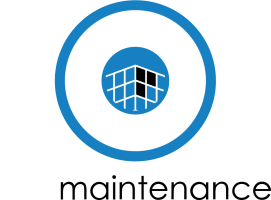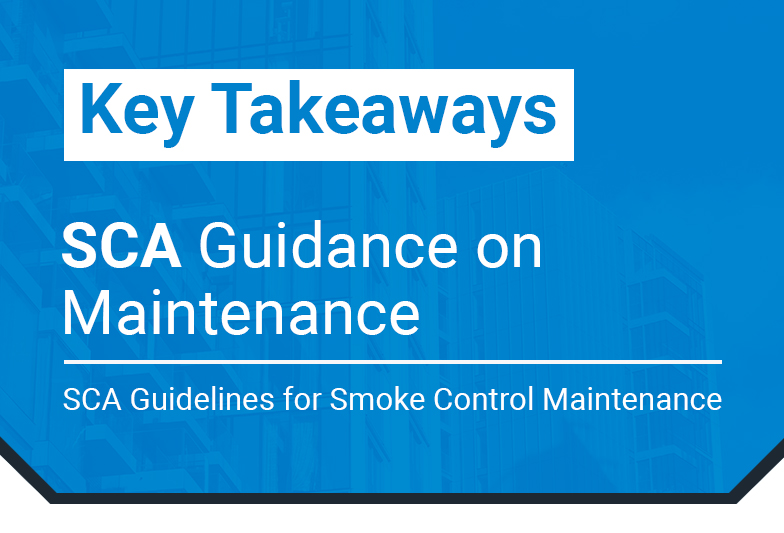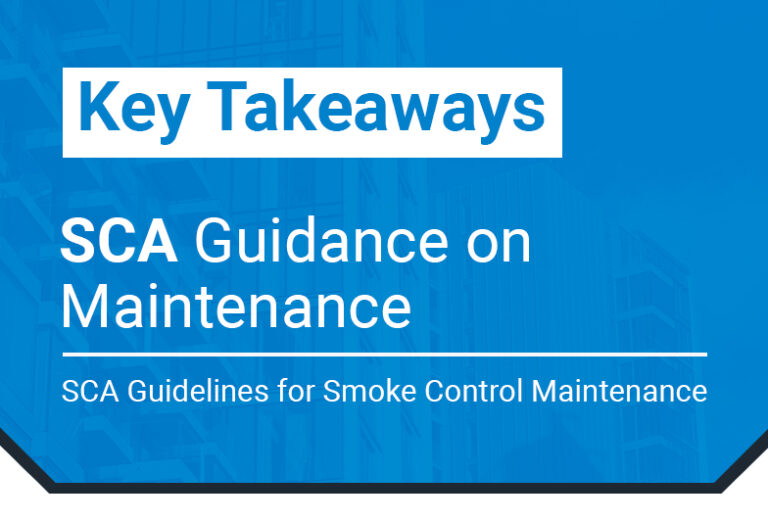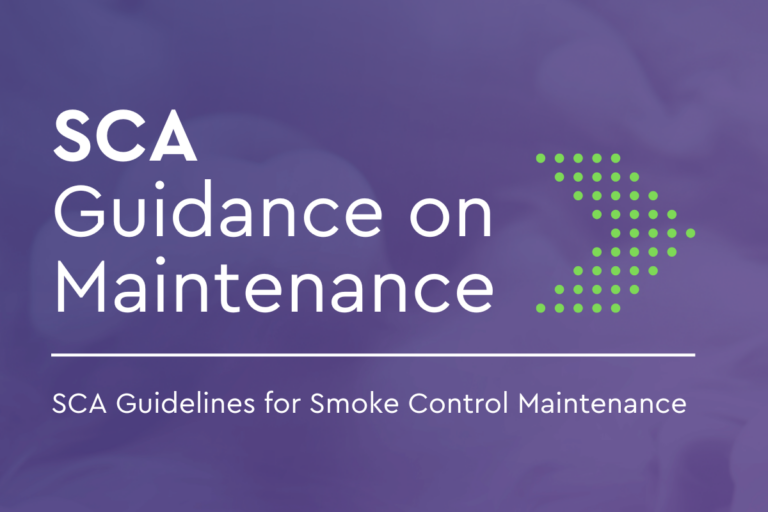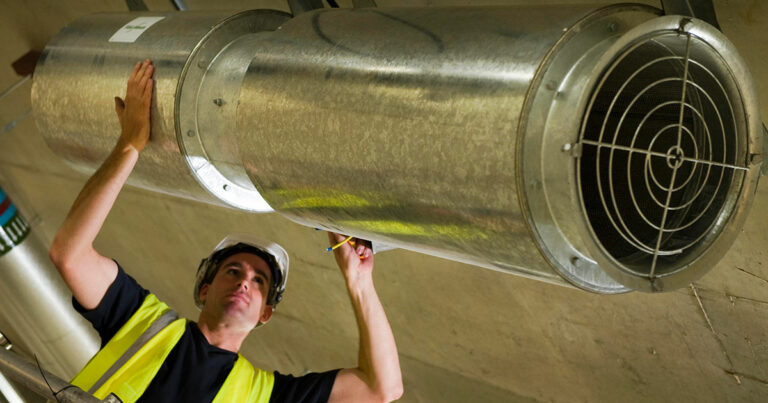The Smoke Control Association (SCA) has released its Guidance on Maintenance of Smoke Control Equipment, reinforcing the critical role of smoke control maintenance in fire safety. Regular smoke ventilation maintenance ensures optimal system performance, reducing risks to life and property in the event of a fire.
In this article, we’ll break down the key takeaways from the guidance, including legal responsibilities, recommended maintenance schedules, and the importance of qualified professionals in keeping smoke ventilation systems in optimal working order.
Why is Smoke Control Maintenance Essential?
Smoke control systems, including automatic opening vents (AOVs), natural ventilation, and mechanical smoke ventilation systems, play a vital role in protecting escape routes, stairwells, and fire-fighting access points. However, lack of maintenance can result in damaged, disconnected, or inoperable systems. Reports have recently surfaced highlighting a concerning trend: during renovations, especially those involving external cladding or façade materials, AOV systems are often damaged, disconnected, or left inoperable. If these components are not regularly maintained or checked, this can go under the radar, leading to fatalities in the event of a fire.
Legal Compliance: The Responsible Person’s Duty
The Regulatory Reform (Fire Safety) Order 2005 (RRO) places a legal duty on the Responsible Person (RP) (e.g., building owners, landlords, or facility managers) to ensure that all fire safety equipment, including smoke ventilation systems is kept in efficient working order and maintained in good repair. Specifically, Article 17 of the RRO states that all fire safety equipment must be maintained in an efficient state, working order, and good repair.
What Happens If You Don’t Maintain Smoke Ventilation Systems?
Failing to maintain smoke ventilation systems can have catastrophic consequences, compromising life safety, legal compliance, and building integrity. In a fire, poorly maintained smoke control systems can fail to clear toxic smoke, reducing visibility, increasing smoke inhalation risks, and obstructing fire fighting access and safe evacuation.
Tragically, the Grenfell Tower fire incident in 2017 highlighted the devastating impact of inadequate fire safety measures, including the lack of smoke ventilation maintenance for the smoke control system.
Grenfell Tower had a mechanical smoke ventilation system installed to help extract smoke from the lobbies in case of fire. However, this system was in a poor state, and there was no clear evidence that it had been properly maintained or was fully functional at the time of the fire.
Investigations revealed malfunctioning smoke extraction systems, which contributed to the rapid spread of dense, toxic smoke, making escape routes impassable. Unlike other fire safety systems like sprinklers or alarms, there was no dedicated maintenance contract in place for the smoke control system. The Grenfell Inquiry also revealed that the system had been altered in the years leading up to the fire, but there were no clear records of proper commissioning or testing after changes were made.
Further to the risk of loss of life, neglecting smoke ventilation maintenance and failing to comply with the Regulatory Reform (Fire Safety) Order 2005 and Building Safety Act 2022 can lead to:
- Legal enforcement actions
- Significant fines
- Imprisonment in severe cases
Additionally, the Building Safety Act 2022 requires high-risk buildings (residential buildings over 18 meters or with at least seven stories buildings containing two or more residential units) to have a Principal Accountable Person (PAP) to oversee compliance.
The PAP is the highest authority responsible for fire and structural safety in high-risk buildings. Typically, this can be the building owner, management company, landlord or freeholder or corporate entity responsible for the building’s safety
They are accountable for:
- Managing fire and building safety risks
- Overseeing smoke control system maintenance
- Ensuring compliance with fire safety legislation
- Maintaining clear records and safety documentation
- Reporting faults and safety breaches to the relevant authorities
Recommended Smoke Ventilation Maintenance Schedule
The SCA guidance aligns with Annex I of BS 9999:2017, BS 9991:2024 and provides a detailed breakdown of fire safety system maintenance across different types of smoke control systems:
- Mechanical Smoke Control Systems
- Natural Smoke Control Systems
- Pressure Differential Smoke Control Systems
- Mechanical Car Park Ventilation Systems
To ensure optimal performance and compliance, regular maintenance of smoke ventilation systems is essential. The Smoke Control Association (SCA) has released recommended maintenance schedules to support system reliability and regulatory adherence.
Mechanical Smoke Control Systems
These systems use mechanical fans to extract smoke and introduce fresh air into the building.
| Daily | Nominated Person |
| Weekly | Nominated Person |
| Monthly | Competent Person |
| Quarterly | Competent Person |
| 6-Monthly | Competent Maintainer |
| Annually | Certified SDI19 Organisation |
Natural Smoke Control Systems
These systems use automated vents to allow smoke to escape naturally.
| Daily | Nominated Person |
| Weekly | Competent Person |
| Monthly | Competent Person |
| Quarterly | Competent Person |
| 6-Monthly | Competent Person |
| Annually | Certified SDI19 Organisation |
Pressure Differential Smoke Control Systems
These systems create pressure differentials to keep escape routes clear of smoke.
| Daily | Nominated Person |
| Weekly | Competent Person |
| Monthly | Competent Person |
| Quarterly | Competent Person |
| 6-Monthly | Competent Person |
| Annually | Certified SDI19 Organisation |
Mechanical Car Park Ventilation Systems
These systems clear smoke and toxic fumes from underground and enclosed car parks.
| Daily | Nominated Person |
| Weekly | Competent Person |
| Monthly | Competent Person |
| Quarterly | Competent Person |
| 6-Monthly | Competent Maintainer |
| Annually | Certified SDI19 Organisation |
The Importance of Qualified Maintenance Professionals
The SCA guidance emphasizes that maintenance should be performed by competent individuals with the necessary expertise and qualifications. Utilising unqualified personnel can lead to inadequate servicing, potentially compromising system effectiveness. It’s crucial to ensure that maintenance providers are well-versed in the specific requirements of smoke control systems:
✔ Expertise in smoke vent maintenance, AOV maintenance, and fire safety system maintenance
A thorough understanding of all components within the smoke control system is necessary for effective maintenance. This includes familiarity with smoke extract fans, control panels, detectors, and other integral parts. Regular updates and training on the latest technologies and standards are recommended for maintenance personnel.
✔ Certification under SDI 19, ensuring compliance with industry best practices
The SDI 19 certification is a UKAS accredited third-party certification scheme developed by the Smoke Control Association (SCA) and managed by IFC Certification Ltd (IFCC). It is the industry standard for smoke control system installers, ensuring that only competent and qualified professionals handle these critical life safety systems.
✔ Access to proper documentation and up-to-date training
This extends to the maintenance of relevant documentation. Maintaining detailed records of all inspections, tests, training and maintenance activities is essential. This documentation not only demonstrates compliance with safety regulations but also aids in tracking the system’s history and performance over time.
Maintain Compliance with FDS Maintenance
Don’t risk fire safety non-compliance. Contact FDS Maintenance today to schedule your smoke ventilation maintenance and keep your building safe!
At FDS Maintenance, we specialise in keeping smoke ventilation systems in peak condition. Our expert engineers ensure your AOVs, vents, and smoke control systems comply with the latest SCA guidelines.
